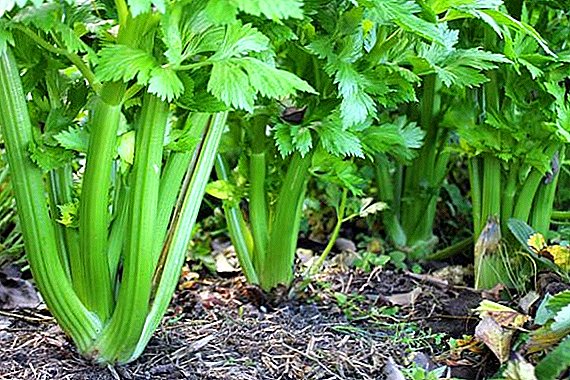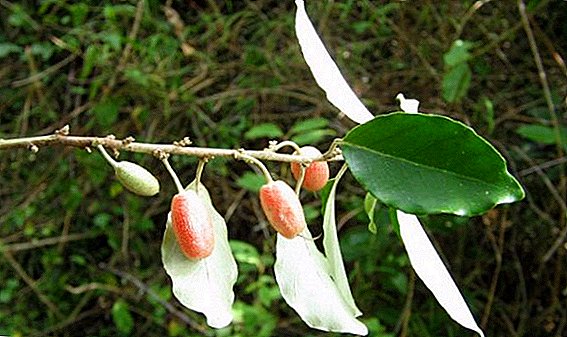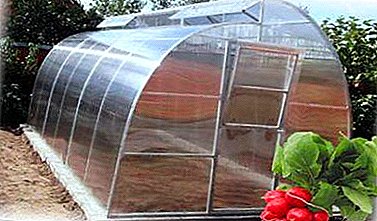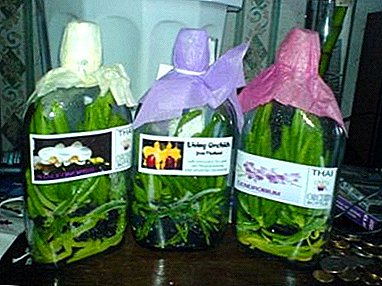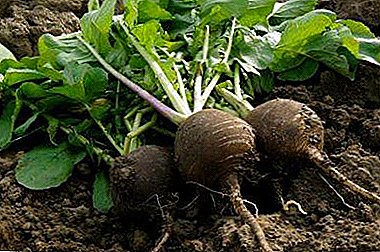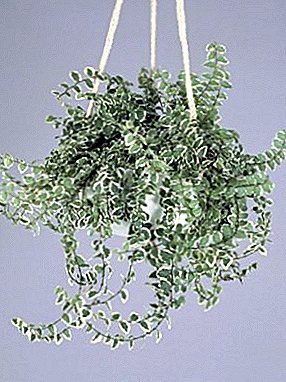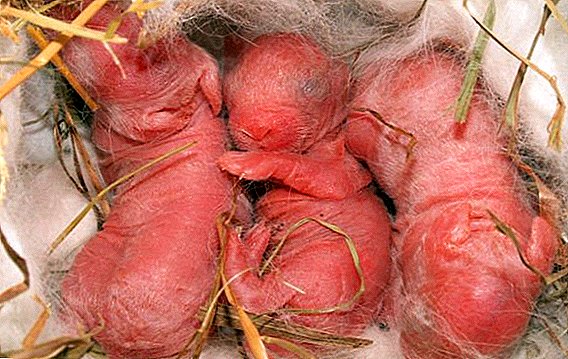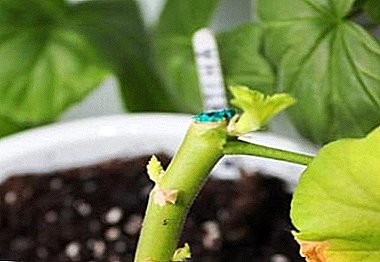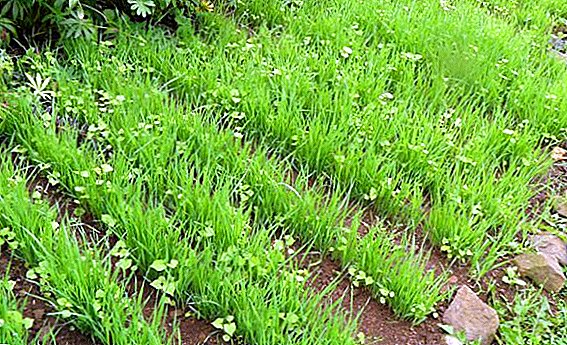 Increasingly, on our sites rye settles as a siderat. Sideral crops are an excellent source of organic fertilizer and an alternative to manure. Different cultures can act as siderats, but rye is the most popular.
Increasingly, on our sites rye settles as a siderat. Sideral crops are an excellent source of organic fertilizer and an alternative to manure. Different cultures can act as siderats, but rye is the most popular.
Rye as a siderat: features
Rye is an annual grass plant of the cereal family. It has several advantages that allow you to use this crop as a fertilizer. First of all, rye as a fertilizer feeds the soil with potassium, and the root system, reaching a length of one and a half meters, loosens the earth, improving the soil structure, moisture and air exchange and protects against the formation of erosion.
Rye is rapidly increasing its green mass, it thrives well, is an unpretentious, frost-resistant plant (winter crops withstand up to -25 ºC). It is convenient to sow rye in the fall, so that it overwinter under the snow cover, and in spring it will begin to grow immediately after the snow melts. That is, no need to cultivate the soil with a cultivator.  In addition, this grass is a natural orderly - planting rye will suppress weeds. As a siderat, it is advisable to plant it after onions, garlic and root crops, which are characterized by accumulation of nematodes and rot in the soil.
In addition, this grass is a natural orderly - planting rye will suppress weeds. As a siderat, it is advisable to plant it after onions, garlic and root crops, which are characterized by accumulation of nematodes and rot in the soil.
Did you know? In the practice of agriculture, siderats have been used since time immemorial. In Europe, this reception came from China, and in the Mediterranean countries, he appeared since the days of ancient Greece.
Advantages and disadvantages of rye as siderata
Widespread winter rye, as a siderat, has received thanks to several advantages:
- affordable price;
- unpretentiousness in cultivation;
- undemanding of soil quality (it grows on acidic, sandy, saline and poor soils);
- a well-developed root system, which makes it possible to produce hard-to-reach nutrients and turn them into easily digestible for most crops;
- after rye, many vegetable crops can be planted (potatoes, tomatoes, cucumbers, pumpkins, zucchini);
 retains snow, prevents soil freezing;
retains snow, prevents soil freezing;- actively decomposes, feeding the soil with potassium, nitrogen and phosphorus;
- destroys harmful bacteria and microorganisms and repels pests (wireworms, nematodes);
- planting winter rye as a siderata for two years inhibits the growth of some weeds (sow thistles, bindweeds, wheatgrass);
- can serve as feed for livestock (although not very nutritious, but very stored).
Important! You can not plant rye between trees or among garden crops - this can reduce the yield.
Features planting rye as a siderate plant
If you are going to use rye as a siderat, you need to know the planting time and how to plant it. The effectiveness of siderata depends on the age of the plant - the young are rich in nitrogen, and mature - organic matter.
When to plant rye as a siderat
The time of planting rye, you can choose any - from the beginning of the summer until October. But, as a rule, this siderat is planted after harvest, when the plot is freed.
Agrotechnics claim that the ideal time to sow winter rye as siderat is mid-August-mid-September.
Did you know? The term "green man" has been proposed by the French scientist J. Vilém as far back as the 19th century.
How to sow rye, planting technology
First of all, select the area on which you plan to plant siderat, and apply organic and mineral fertilizers.
As a green fertilizer, you need to use fine-grained varieties - seeds need less and they are less demanding of conditions. When growing rye as a siderata, the following sowing technology is used: in a continuous rowing method with 15 cm row spacing. The seed rate is 2 kg per hundred. Sowing depth - 3-5 cm, on light soils - deeper.
Important! After sowing, you need to mix the seeds with the ground, otherwise the birds will peck all the grains..
If sowing occurs manually, the rate is 1 seed per 4 cm². For green rye norm - 750 g per hundred. It is necessary to sow rye densely: in the spring - in order to stand by a wall, it can be a little less common in winter.
 It is better to plant rye as a siderat in the autumn using the seeds of last year's crop - fresh ones have not yet passed the period of post-harvest ripening and may simply not grow.
It is better to plant rye as a siderat in the autumn using the seeds of last year's crop - fresh ones have not yet passed the period of post-harvest ripening and may simply not grow.
In the spring, the grown greens are crushed and buried for two weeks before planting the main crop in the soil.
Green manure can be grown both on unoccupied plots (for future harvest), and as an adjacent crop. And for the rest of the soil rye can be sown for a whole year.
How to care for rye as a siderata
Siderats, including winter rye, are pruned in the spring, to a depth of 5 cm they loosen the soil and plant the main crop.
If rye was planted in the spring, it grows with seedlings. After the green manure grows and begins to shade the seedlings of the main crop, it must be pruned. The soil in the garden bed is loosened (but not dug up) and mulch with rye tops.
Important! Green man need to be cut in the budding phase, otherwise the stems become coarse, and for growth they will take nutrients from the soil. In addition, when ripe, green manure seeds can turn into weeds.
 If rye was sown as a siderat at the beginning of summer, then it will need to be embedded in the ground before freezing, when you dig up the plot for the winter. Up to this point, rye will have time to unwind.
If rye was sown as a siderat at the beginning of summer, then it will need to be embedded in the ground before freezing, when you dig up the plot for the winter. Up to this point, rye will have time to unwind.It must be remembered that rye, as a green fertilizer, decomposes in the soil only in the presence of moisture, therefore green manure must be accompanied by irrigation.
Did you know? Another Pliny wrote: "If rye buried in the ground, then the benefits of such a procedure will be no less than from the introduction of manure."
Rye as a siderat when and how to dig
Many are interested in when to dig up siderats and whether it should be done.
In the spring, the site on which the rye was grown is plowed. This is done immediately after the snow melts to leave sufficient moisture in the soil.
As a rule, grown siderata plow 7-14 days before planting the main crop. You can simply cut the plants and leave them on the beds at a depth of 2-3 cm. This method is better because it allows you to preserve the structural functionality of the roots of rye, and natural foliage compost will eventually appear on the surface.
 By the way The best time to mow rye is to achieve a height of 30 cm. At this point, the plant is still young, and it has accumulated the maximum amount of nutrients. The rye is older, the longer the decomposition period will be. After the soil is fertilized with rye-siderat, the time comes when you need to plant the main crop.
By the way The best time to mow rye is to achieve a height of 30 cm. At this point, the plant is still young, and it has accumulated the maximum amount of nutrients. The rye is older, the longer the decomposition period will be. After the soil is fertilized with rye-siderat, the time comes when you need to plant the main crop.
If the rye began to outgrow, you can simply mow and leave it on the ground, and you can dig up the ground later, when new shoots appear.
Important! When using sideratov, the main rule should be taken into account - it is impossible to plant a plant from the same family as the green manure on this site. Diseases and pests characteristic of this species accumulate in the soil.
Another important rule: winter rye as a siderat can not be mowed before the frost - after the plant overwinters, the plot can be dug up and planted the planned main crop. In this way, both soil protection and nutrition for future plants will be provided. The main thing - to adhere to the rule of "shift" cultures.
As you can see, the green manure is an excellent intermediate crop for a competent crop rotation. They increase soil fertility, protect against weeds and pests, loosen the soil superbly. And knowing how to sow green manure rye and how to use it further will help to get a great harvest.


 retains snow, prevents soil freezing;
retains snow, prevents soil freezing;